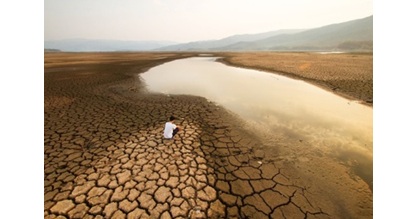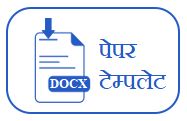Impact of Climate Change on Water Resources: A Review

DOI:
https://doi.org/10.54060/a2zjournals.jase.89Keywords:
Climate Change, Water, Temperature, Precipitation, Freshwater, HydrologyAbstract
Climate change is the increase in Earth’s mean temperature and the corresponding significant modifications to weather patterns. Climate and water are inextricably linked. Water gets more scarce, polluted, and unreliable as a result of severe weather conditions. Resources of water are projected to be impacted by climate change, which has an impact on precipitation quantity, variability, timing, form, and intensity. Rising global temperatures result in more water evaporating, which raises the amounts of water vapor in the atmosphere, leading to more frequent, intense, and violent rainstorms in the years to come. Temperature and precipitation variations are the primary ways of climate change that modify the hydrological cycles, which could exacerbate regional and worldwide water shortages. Therefore, the main cycle through which climate change occurs is weather and water, specifically the delicate balance between evaporation and precipitation. Water management techniques and the operation of current water infrastructure, such as irrigation, drainage, flood defenses, and hydropower, are all impacted by climate change. Current climate projections indicate that safeguarding the water will require controlling its effects, whether excessive or insufficient and taking the necessary steps to reduce the vulnerabilities of businesses and communities. The correlation between climate change and water resources is discussed in this review. Evaluating the availability of water resources in light of future national needs and the predicted effects of climate change and its variability is essential for long-term development on both a national and global scale. Consequently, it is clear that there are intricate connections between the climate, water, biophysical and socioeconomic systems. Therefore, human society, especially in Rajasthan is primarily concerned about the interaction between change of climate and water resources, particularly freshwater.
Downloads
References
United Nations Economic Commission for Africa and African Climate Policy Centre.
Sukanya and S. Joseph, Environmental Radon: A tracer for hydrological studies. Singapore: Springer Nature Singapore, 2023.
TERI, Rajasthan State Action Plan on Climate Change, Government of Rajasthan, 2012. [Online]. Available: http://chrome-extension://efaidnbmnnnibpcajpcglclefindmkaj/https://environment.rajasthan.gov.in/content/dam/environment/RPCB/Reports%20n%20Papers/ClimateChange_09_04_2012.pdf. [Accessed: 20-Apr-2024].
UN-Water, Climate Change and Water: UN-Water Policy Brief, 2010. [Online]. Available: https://www.unwater.org/publications/un-water-policy-brief-on-climate-change-and-water
IPCC, Technical Paper VI: Climate Change and Water, Intergovernmental Panel on Climate Change, 2018. [Online]. Availa-ble: http://chrome-extension://efaidnbmnnnibpcajpcglclefindmkaj/https://www.ipcc.ch/site/assets/uploads/2018/03/doc13-5.pdf. [Accessed: 2-Apr-2023].
Ministry of Environment, Forest and Climate Change, National Action Plan on Climate Change (NAPCC), Government of India, 2008.
India Today Web Desk, “Luni, the Indian river with saline water that doesn’t drain into any sea or ocean: Facts you need to know,” India Today, 01-Nov-2018. [Online]. Available: https://www.indiatoday.in/education-today/gk-current-affairs/story/luni-mysterious-indian-river-in-west-rajasthan-facts-html-1380307-2018-11-01. [Accessed: 10-Apr-2022].
K. Tiwari and R. Goyal, “Impact of Climate Change on Water Resource Systems of Rajasthan State,” [Online]. Available: https://www.researchgate.net/publication/344797489_Impact_of_Climate_Change_on_Water_Resource_Systems_of_Rajasthan_State
M. Bokil, “Drought in Rajasthan: In search of a perspective,” Economic and Political Weekly, vol. 35, no. 48, pp. 4171–4175, 2000.
R. K. Goyal, “Sensitivity of evapotranspiration to global warming: a case study of arid zone of Rajasthan (India),” Agricul-tural Water Management, vol. 69, no. 1, pp. 1–11, 2004.
Ministry of Water Resources, “Water Resources Information,” Government of India, 2013. [Online]. Available: http://wrmin.nic.in/index3.asp?subsublinkid=829&langid=1&sslid=417
P. P. Mujumdar and S. Ghosh, “Climate change impact on hydrology and water resources,” ISH Journal of Hydraulic Engi-neering, vol. 14, no. 3, pp. 1–17, 2008.
Government of Rajasthan, Rajasthan State Action Plan on Climate Change, 2011.
P. K. Singh, K. Papageorgiou, H. Chudasama, and E. I. Papageorgiou, “Evaluating the effectiveness of climate change adap-tations in the world’s largest mangrove ecosystem,” Sustainability, vol. 11, no. 23, p. 6655, 2019.
I. A. Lakhiar et al., “A review of evapotranspiration estimation methods for climate-smart agriculture tools under a changing climate: vulnerabilities, consequences, and implications,” J. Water Clim. Chang., 2024.

Downloads
Published
How to Cite
CITATION COUNT
Issue
Section
License
Copyright (c) 2025 Nimisha Jain, Nidhi Agnihotri

This work is licensed under a Creative Commons Attribution 4.0 International License.



























